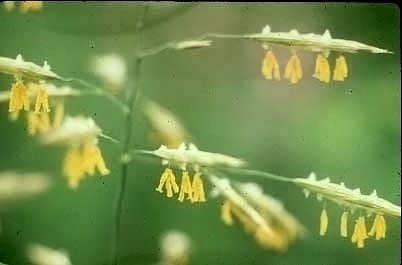Birchleaf Mountain Mahogany

Common Name(s):
Mountain Brome
Scientific Name:
Bromus marginatus Nees ex Steud.
Scientific Name Synonyms:
Bromus carinatus Hook. & Arn.
Symbol:
BRMA
Description:
Life Span: Perennial
Origin: Native
Season: Cool
Growth Characteristics: An erect, rather short-lived bunchgrass, growing up to 3 feet high, without rhizomes. It starts growth in early spring, and seeds mature by August. It reproduces from seeds and tillers. Seedlings are very vigorous. Plants have a relatively short lifespan (4-5 years).
Seedhead: Erect panicle, 4 to 8 inches long, branches erect to spreading; spikelets distinctly flattened, contain 5 to 9 florets; ¼ inch awn arises between the teeth of the divided apex of lemma; lemmas hairy.
Leaves: Hairy; blades 6 to 12 inches long, and up to 3/8 inches wide; leaves rolled in bud; ligules membranous, about 1/8 inch long, rounded; auricles absent.
Ecological Adaptions:
Mountain brome is a valuable native grass of nearly all of the mountainous area of Utah at elevations ranging from 5,000 to 13,000 feet. Topographic features where it grows include bottomland, mountain slopes, valleys, and ridge tops.
Soils: It grows well in a wide variety of soils including poorly drained types. It is most abundant in moderately moist, well-developed, deep, medium-textured soils.
Associated Species: Idaho fescue, Richardson's geranium, Columbia needlegrass, bluebunch wheatgrass, and aspen.
Uses and Management:
Mountain brome is an excellent grazing plant for cattle, horses, elk, and fairly good forage for sheep and deer. The large seeds are eaten by many small mammals, especially rodents, and also by birds. Forage becomes harsh and fibrous at maturity.
Since it is fairly sensitive to grazing by the larger animals, it requires careful management. Reducing the grazing pressure when it is in the reproductive stages, or limiting the use to about 50 percent of the total annual growth, gives good results and response by this plant, and will help to maintain this plant.
Mountain brome has been seeded for range revegetation and erosion control. It is effective in improving water infiltration. Being a short-lived perennial, it may not persist in seedings.

